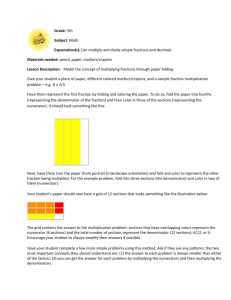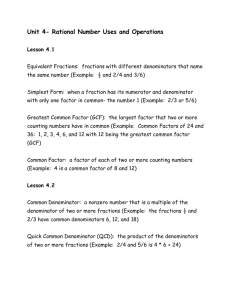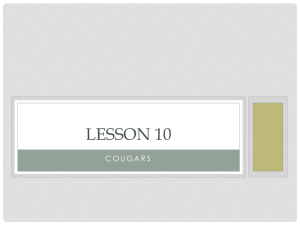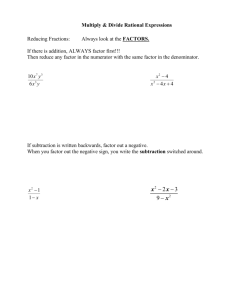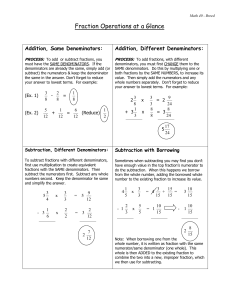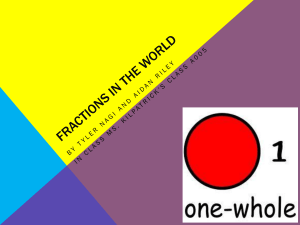Fourth Grade News Writing
advertisement
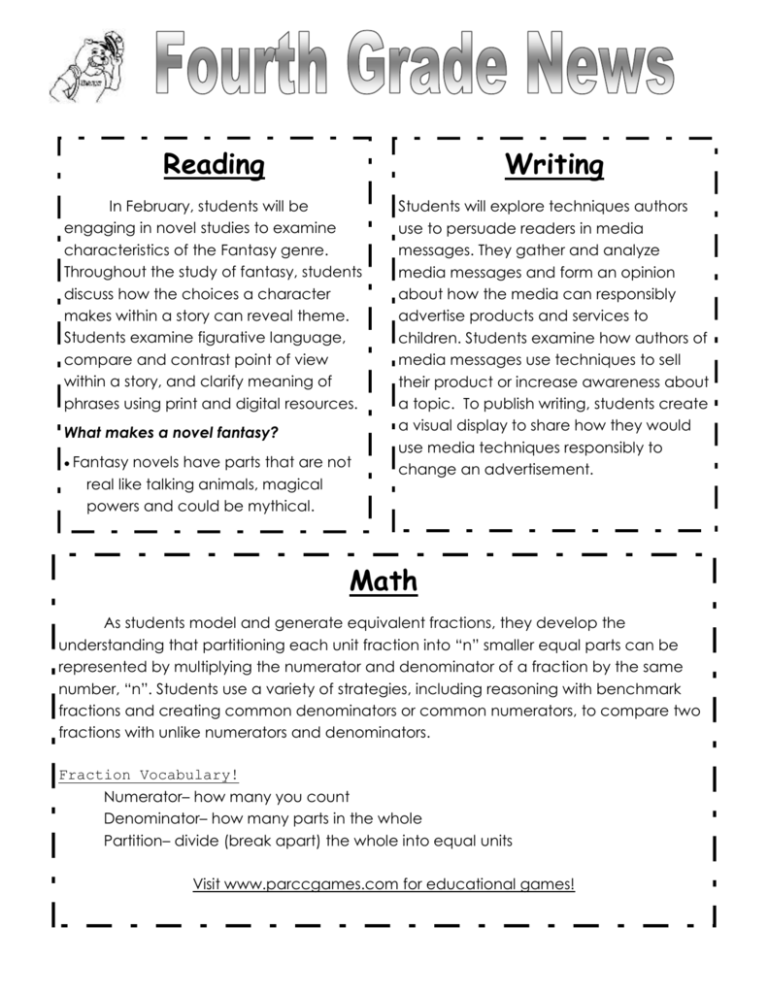
Reading Writing In February, students will be engaging in novel studies to examine characteristics of the Fantasy genre. Throughout the study of fantasy, students discuss how the choices a character makes within a story can reveal theme. Students examine figurative language, compare and contrast point of view within a story, and clarify meaning of phrases using print and digital resources. Students will explore techniques authors use to persuade readers in media messages. They gather and analyze media messages and form an opinion about how the media can responsibly advertise products and services to children. Students examine how authors of media messages use techniques to sell their product or increase awareness about a topic. To publish writing, students create a visual display to share how they would use media techniques responsibly to change an advertisement. What makes a novel fantasy? Fantasy novels have parts that are not real like talking animals, magical powers and could be mythical. Math As students model and generate equivalent fractions, they develop the understanding that partitioning each unit fraction into “n” smaller equal parts can be represented by multiplying the numerator and denominator of a fraction by the same number, “n”. Students use a variety of strategies, including reasoning with benchmark fractions and creating common denominators or common numerators, to compare two fractions with unlike numerators and denominators. Fraction Vocabulary! Numerator– how many you count Denominator– how many parts in the whole Partition– divide (break apart) the whole into equal units Visit www.parccgames.com for educational games! Science Remind 101 Students explore, discover, and define the properties of matter as it exists in three states: liquid, solid, and gas. Students identify, describe, and measure properties of matter including mass and volume with an emphasis on conservation of matter as it changes form. Remind101 is a free and simple way for teachers to stay in touch with parents. It is a program that allows your child’s teacher to send out a message through a cell phone text. The teacher will not have your personal cell phone number nor will anyone else in your child’s class. Simply text in the code to the number below and you will be able to receive the messages. Phone Number: (240) 256-3144 Code: @daly4 Social Studies Students revisit the unique and diverse cultures of early Native American societies as they participate in a chronological study of the establishment of five early European settlements in North America: St. Augustine, Roanoke, Jamestown, Plymouth, and St. Mary’s. Students examine motives for migration, advantages and disadvantages that the environment surrounding each settlement provided, as well as the establishment of slavery in Maryland. Students not only explore the social, political, and religious character of these European settlements, but also how interaction among settlers and Native American peoples resulted in the borrowing and sharing of culture and affected relationships. Students compare similarities and differences among early European settlements. Students should be reading at least 20 minutes, five nights a week! Dates to Remember: February 10 Jump Rope for Heart February 13 Valentine’s Day Party February 16 Presidents’ Day: No School February 17 and 18 Field Trip to Kingsley Center February 27 Early Release day for students


